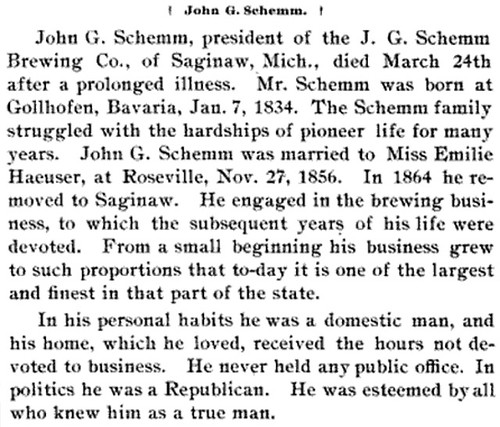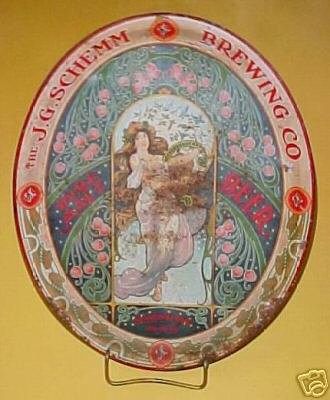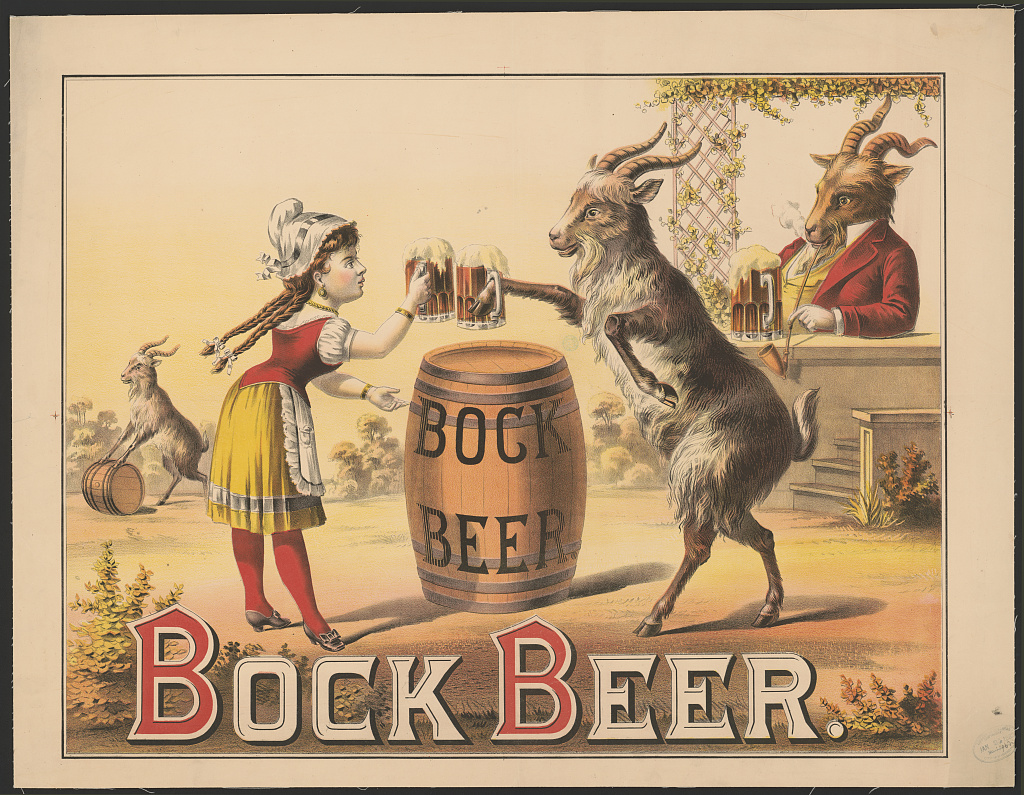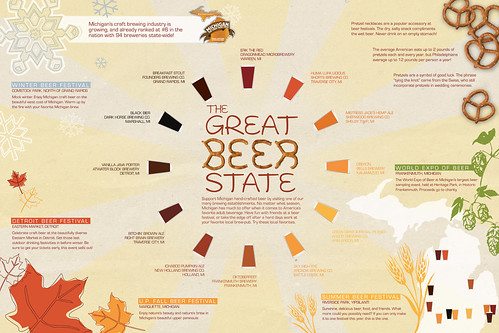![]()
Today is the birthday of John G. Schemm (January 7, 1834-March 24, 1899). He was born in Germany, but when he was 22, in 1852, he and his father moved to the U.S., settling on a farm near Detroit. Unfortunately, after a short time, John’s Dad passed away, and he moved to Saginaw, Michigan in 1864. With business partner Christian Grueler, he started a brewery, the Schemm & Gruhler Brewery, in 1866. Three years later, Gruhler passed away and he brought on another partner, renaming the brewery the Schemm & Schoenheit Brewery in 1874. But by 1881, he bought him out, and it became the John G. Schemm Brewery. When he passed away, his son George C. Schemm took over, and incorporated it in 1899 as the J. G. Schemm Brewing Co. Inc. It closed in 1919 due to prohibition, and was sold to another business who tried reopening it as the Schemm Brewing Co. Inc., but it closed for good in 1938. While I found some information on the brewery, there was very little about Schemm himself, not even a picture of him.

This account of the brewery is from the “Industries of the Saginaws: Historical, Descriptive and Statistical,” by John W. Leonard, published in 1887.



This Schemm’s obituary from the American Brewers Review in 1899:




















